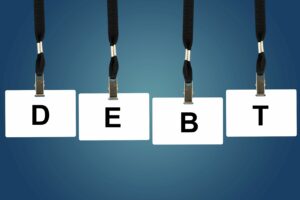
Rejection is a natural part of life. We all need to learn to deal with it. But sometimes, rejection can be more than just a little painful. If you need a car for work urgently, but your bank won’t grant you a loan, for example.
In cases like these, you will need to come up with a solid strategy if you want to turn the tide. In this article, we want to give you a few ideas on how to do that.
There is certainly no reason to give up hope. Plenty of our customers have been rejected multiple times before turning to us. Now, they are back behind the wheel again. And they’re driving a far better car than they ever imagined they could afford.
Potential reasons for rejection
When you apply for a car loan, you will usually be in touch with a financial manager or assistant. Sometimes, you will spend quite some time discussing your case with her. And yet, that person is hardly ever the one making the actual decision.
As in many other areas of life, algorithms decide on loan applications these days. And those algorithms run on rules. Banks and credit unions decide on these rules to maximise profits. In addtion, they will also follow national law.
So there is a simple logic to it all: You get rejected for a car loan because you did not meet the rules. The bright side of this, of course is: If you do follow the rules, you should, theoretically, get accepted.
Here’s a list of typical reasons why the bank’s algorithm would reject you:
- Simple formal mistakes: Maybe you haven’t filled out all relevant sections of the form. Or the information you did provide was insufficient or contradictory. If you had to provide reasons as to why you applied, these may not have been good enough.
- Bad credit history: Your credit history tells the lender about how well you paid back your debt in the past. If the history suggests there were many problems or even defaults, this makes it a lot harder for you to succeed.
- No credit history: First time loan applicants have always found it hard to succeed. This is because it is impossible for the bank or dealer to determine the risk of lending to you.
- Income & employment: A low income and no employment are considered risk factors. The same goes for uncertain or fluctuating employment. Even being self-employed raises your chances of a rejection.
- DTI: The debt to income ratio reveals how much of your monthly earnings are syphoned off towards paying off your debt. The higher this percentage, the higher the risk of you eventually defaulting.

A fresh perspective
If you’ve been rejected for a car loan, you’ll need to find out what the reason is.
This requires you to take a fresh perspective on things:
We rarely think of a bank or dealer as a partner. But really, that’s what they are. Most people working at a finance company genuinely care and want you to succeed. Not just because they have a heart. But also because that’s how they make their money.
If they could provide you with the money, they probably would. But, as mentioned, banks need to follow rules and have very little to no leeway.
This is why it is by no means an absurd idea to simply ask them for details on the rejection. Or, even better, ask for their acceptance criteria before handing in your application in the first place. That way, you’ll know where you’ll need to make some improvements.
From rejection to acceptance
So what to do to meet the criteria of financial institutions and dealers? The following sections will explain the most promising steps to take in order to get accepted.
We realise that you won’t be able to make all these changes. Some of them are slightly trivial, which means you probably already thought of them yourself. Others may be too hard. If you could change them, then you would have done so already.
What matters, though, is that you try. The current market for car finance is extremely diverse. And sometimes, all it takes to get accepted is a small improvement.
Car loan strategy #1: Verify your application thoroughly
We’ve talked about simple formal mistakes earlier in this article. Although it is true that these do happen quite a lot, they are not usually the real reason for a refusal.
Still, it would be tragic if your carefully prepared application fell through on account of a few missed points in the form. And it goes without saying that the overall impression will be a lot better if your application looks professional and flawless.
The simplest thing you can and should do is to ask someone to proofread your application. Afterwards, make all the corrections and then read it through one more time yourself. You won’t believe how many errors you’ll still find!
Car loan strategy #2: Improve your credit score
Your credit score is really a summary of your past financial conduct in a single number. This makes it both incredibly useful and problematic.
On the one hand, the widespread use of credit scores has significantly sped up the car loan application process. Theoretically, all a dealer needs to do these days is to check whether your score is above a critical level. Depending on the outcome, they can then reject or accept your application. In fact, some actually do this!
On the other hand, clearly, the score does not reflect your full creditworthiness. It is extremely incomplete and you therefore need to combine it with additional data.
That said, if you can improve your rating, you can achieve a serious hike in terms of your chances for approval.
We’ll cover some of the things you can do in the following sections. But we highly recommend to also:
- Check your credit report for correctness. There may be mistakes in there which could cost you dearly.
- Improve your score by very simple steps. These include registering on the electoral roll. Also, try not to move around too much.
- If you are serious about getting a healthier score, try to keep things more organised by consolidating all your debt on one card.
- Finally, get a credit building card at your bank and make all payments with it. This will help you repair a broken rating.

Car loan strategy #3: Reduce debt
Reducing debt is one of the best ways to improve your credit rating. It is also one of the best ways to get accepted for a car loan.
Unfortunately, it is very hard to achieve.
Still, even with financial difficulties, there are a variety of ways to bring your debt down. We’ll discuss these in more details in future posts.
For the moment, consider the following:
- Debt consolidation can be an excellent way to start reducing your obligations. This works by merging your loans into a single, new one with better conditions.
- A Debt Management Plan is another way of getting lenders to agree to new terms with a better chance of fulfillment. These usually only work if your debt is very high, however.
- You can find free debt advice at many institutions. They can assist you with finding realistic approaches and also offer some legal help if required.
Car loan strategy #4: Reduce spendings
Reducing debt and raising your income are typically the hardest pieces of advice to implement. In comparison, reducing your spendings is a lot easier to pull off.
This is because even those of us with the biggest financial problems will often spend money on things we don’t, strictly speaking, need.
It may seem pretty harsh to deny yourself a bit of pleasure from time to time. But tightening your belt at least for a while makes sense.
You can do this by simply looking at your monthly spendings and introducing a reasonable spending cap.
Even if it only helps you save £100-200 each month, that’s a great start.
Car loan strategy #5: Consider paying for a credit rating service
As we mentioned, your credit score is a very important part of your car loan application. So if you get rejected, a bad score may have been one of the reasons.
If you are serious about getting that number up, it can be helpful to pay for a subscription with a rating agency. This will give you permanent access to the latest version of your credit reports. You can watch your score develop over time and wait until the best moment for a car loan application has come.
Also, gaining access to this information will help you gauge whether the steps you’re taking are actually having an effect. If they are, keep on track. If they’re not, revise your strategy.
The only issue with this is that different lenders will use different credit rating agencies. And the scores can be quite different! So theoretically, you’d need to watch all credit rating agencies to be sure.
That, however, is obviously too much and too expensive. Taking out a subscription for one provider can, however, make sense, if you use it to support your strategy.
One thing to consider: Maybe you applied at the wrong place?
If you were rejected for a car loan, there may yet be another obvious reason:
Maybe you simply applied at the wrong place. Banks and credit unions are no longer the best institutions to apply at – even though many experts still like to pretend as though they are.
In reality, dealers are usually capable of offering better prices and conditions. They will also have far better deals for those with bad credit or financial difficulties.
At iFinance, for example, we take great pride in trying to create solutions for as many applications as possible. We don’t extend guarantees. But we do look for opportunities where many banks would long have sent out an automated refusal.
Just give us a call at 0141 848 7733 to see what we can do for you. It doesn’t matter if you’re been rejected before.
